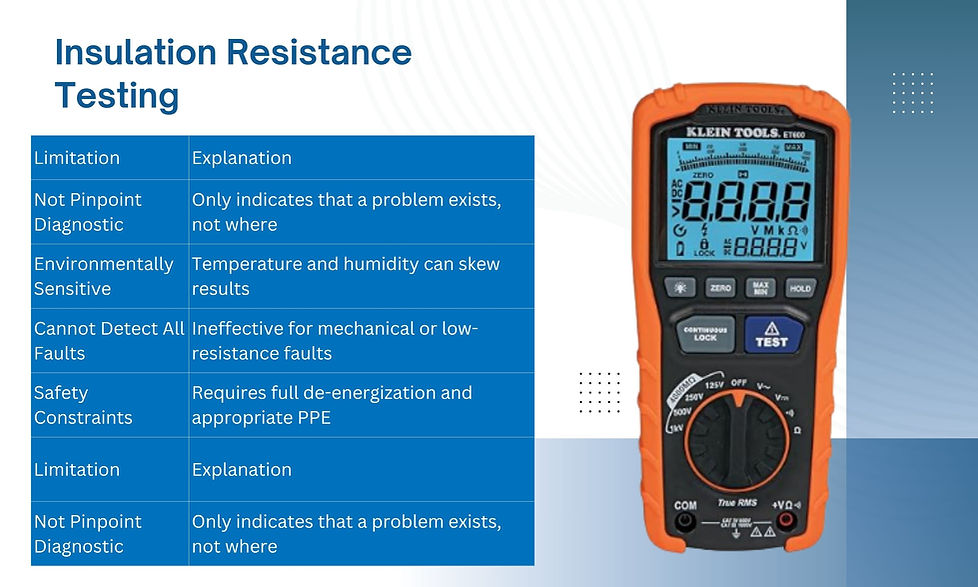
Insulation Resistance Testing
Electrical Testing & Diagnostics
Tests the resistance of insulation materials to ensure electrical safety and prevent leakage currents. Insulation resistance testing measures how effectively electrical insulation resists current flow. The test applies a high DC voltage (typically 250V to 1000V or more) across the insulation and measures leakage current. The resulting resistance value, in megaohms (MΩ), reflects the insulation’s ability to isolate electrical components.
This test is commonly used in commissioning, routine maintenance, and troubleshooting to prevent arc faults, shorts, and equipment failures.

Detection
.jpg)
Insulation Resistance Testing is performed during motor maintenance, troubleshooting, commissioning, or routine inspections. It helps identify insulation degradation, moisture ingress, contamination, or other issues that could lead to insulation breakdown and motor failure.
Capabilties
1.) Detects degradation of insulation over time
2.) Identifies moisture, contamination, and insulation breakdown
3.) Evaluates the condition of cables, motors, transformers, and switchgear
4.) Provides trending data to inform predictive maintenance
5.) Verifies equipment integrity before energizing

Limitations
1.) Cannot locate exact point of insulation failure
2.) Does not detect mechanical faults or shorted turns
3.) Only effective when equipment is properly de-energized and isolated
4.) Results may vary due to temperature, humidity, and contamination
5.) Limited insight on modern complex insulation composites unless paired with other tests

.jpg)
Personnel conducting Insulation Resistance Testing as part of Motor Circuit Analysis should undergo specialized training in MCA techniques, safety protocols, equipment operation, and interpretation of test results. Training programs cover theoretical principles, practical application, adherence to standards, and hands-on experience supervised by experienced professionals.
NDT personnel conducting Insulation Resistance Testing as part of Motor Circuit Analysis should hold relevant certifications in accordance with industry standards and regulations, demonstrating proficiency in MCA techniques and procedures.
.jpg)






